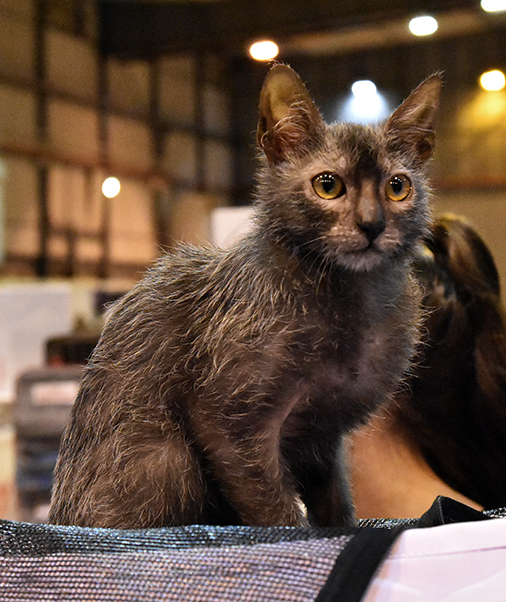Welcome to Ultimate Cat—your go-to source for all things feline! From cat care tips and breed guides to quirky behavior insights and adorable stories, this blog celebrates cats in all their whiskered glory. Whether you’re a first-time cat parent or a lifelong feline fanatic, you’ll find helpful info, fun facts, and plenty of purr-worthy content here.
Monday, May 26, 2025
5 Ways Cats Show Affection (That You Might Be Missing)
Thursday, January 28, 2021
The Birth of Cat Fancy in the United States
The following year the show was smaller, with only 130 cats entered. That didn't matter to cat fanciers and they formed the American Cat Club at the conclusion of the 1896 show. This was the first registry in the United States and it took it upon itself to verify pedigrees and maintain an American studbook. They also sponsored shows and promoted the welfare of cats. Unfortunately, they disbanded a year later and there were no more shows at Madison Square Garden for several years.
Cat fancy in the United States is ever fluid, however, so it was in 1899 that the Chicago Cat Club was founded. Then the Beresford Club was established. It eventually supplanted the Chicago Cat Club, becoming the premier cat club in the United States. This wouldn't last long however, because the 20th century was dawning.
Thursday, January 21, 2021
The Birth of Cat Fancy in England
The breeds chosen for exhibition at shows in the 19th century were of necessity limited to those available in England at the time. There were Abyssinian and Manx, of course, but there were a couple more. The Royal Cat of Siam were permitted in both pointed and solid-chocolate colors. These cats were likely the descendants of the cats brought to England by the Romans so many centuries before. Longhaired cats were their own category, a category which included Persians, Angoras, and some of the cats from the colder climes of Russia. There were even classes for hybrid cats, if they were crossed between domestic cats and wild cats, and classes for the heaviest cats, gelded cats, and "Cats Belonging to the Working Men". This last class was quite literally for the working class of people. The entry fee was reduced, as was the prize money for the winners in that class.
This show was so popular that it led to more shows, which eventually led to the formation of the National Cat Club (NCC) in 1887. Harrison Weir was, naturally enough, the president of the NCC. The NCC, whose motto was "Beauty Lives by Kindness", served more than one purpose. It was a club, yes, but it was also a governing body. It spent a lot of time creating a national stud book and even created the first register to record the lineage of pedigreed cats. Since none of this had existed before, it took a great deal of time and effort to accomplish this. Harrison Weir published Our Cats in 1889 to showcase some of their work.
But of course, a rival would come along. The Cat Club (TCC) was founded in 1898 by Lady Marcus Beresford, among others. The TCC created its own studbook and register, so if you wanted to show your cats in both the NCC and TCC, you had to enroll them in both. This annoyed some fanciers, but it was what it was. There was considerable rivalry between the NCC and TCC for five years, but eventually The Cat Club disbanded.
Other cat clubs had popped up across England, though, which was just as annoying to cat fanciers. Eventually, all these various cubs in England agreed to amalgamate, and in March 1910 they formed the Governing Council of the Cat Fancy. This remains the oldest and largest cat association in Great Britain today. If you want to show cats in England, you register with the Governing Council of the Cat Fancy. They're where it's at, at least in Great Britain.



